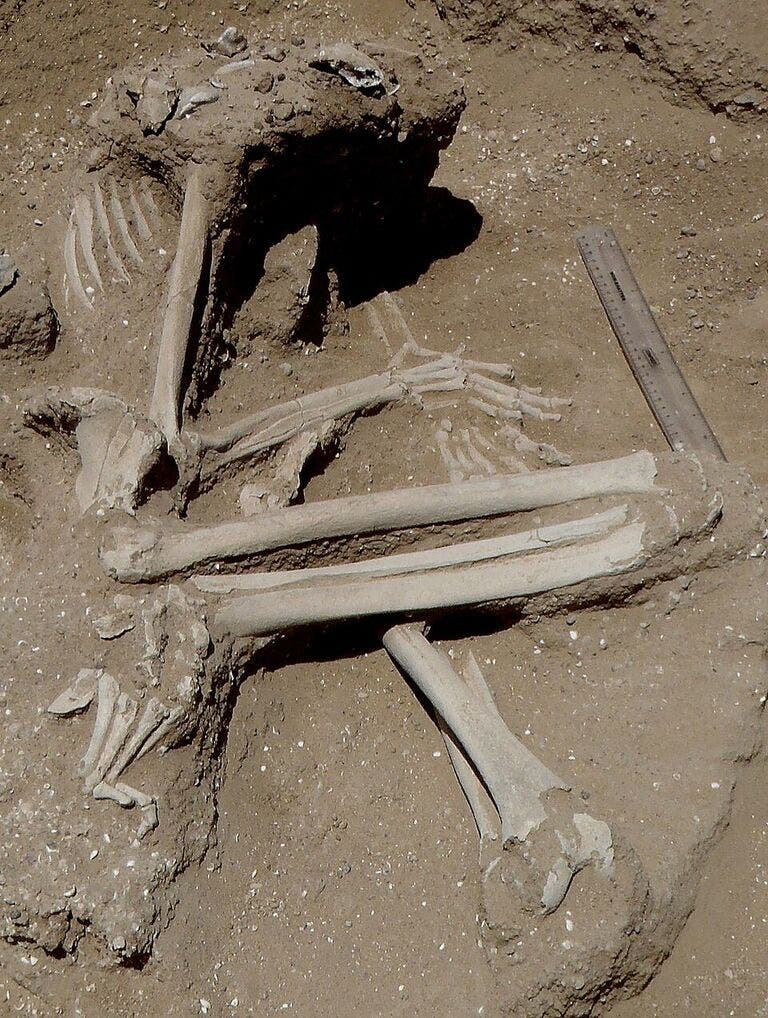We tend to think of war as something associated with a static civilizations. Cities and countries sending armies to fight each other, invading and conquering lands in the process. But war may have emerged even before humans settled down – a group of archaeologists found the remains of hunter-gatherers massacred 10,000 years ago.
Violence seems to be an almost inescapable reality of human nature. History abounds with examples of wars from the most ancient times, but what about prehistoric times?
Archaeologists have uncovered fossils of men, women and children who were brutally killed, sadly extending the timeline of violent encounters between humans. The discovery of the 27 unfortunate foragers highlights the darker side of life for hunter-gatherers – in grim detail.
The discovery was made by researchers from Cambridge University’s Leverhulme Centre for Human Evolutionary Studies (LCHES) about 20 miles (30 km) west of Lake Turkana in northern Kenya. Out of the 27 people, one man’s skeleton still had a sharp obsidian blade stuck in his skull. Another man had a crushed skull, probably after being hit by a club. Arrow wounds and arrowheads were found in abundance. Many victims had projectile wounds to the neck and broken skulls, hands, knees and ribs and one woman, in her last stages of pregnancy was bound by her hands and feet and killed – the bones of her fetus were also found. There is enough evidence to say that this was a war-like massacre.
“It is a brutal, physical, lethal attack with the intention to kill those individuals who could put up a defense or mount a counter-attack, or who perhaps were of no use to them, whether it was a man or a very pregnant woman, too young or too old,” Mirazón Lahr.
It’s not just the pregnant woman, several other victims were tied in a very particular position. Another telling fact is is the fact that the victims weren’t buried at all.
It’s not clear why the Nataruk massacre took place. It could have been an attempt to seize land or territories, an act of revenge, or simply a developing rivalry between two antagonistic groups.
“The Nataruk massacre may have resulted from an attempt to seize resources—territory, women, children, food stored in pots—whose value was similar to those of later food-producing agricultural societies, among whom violent attacks on settlements became part of life,” said Mirazon Lahr. “This would extend the history of the same underlying socio-economic conditions that characterize other instances of early warfare: a more settled, materially richer way of life.”
However, their sad fate provides an opportunity for researchers to better understand how organized violence emerged and evolved in our species.
“These human remains record the intentional killing of a small band of foragers with no deliberate burial, and provide unique evidence that warfare was part of the repertoire of inter-group relations among some prehistoric hunter-gatherers,” said lead researcher Marta Mirazón Lahr.
Regardless, this finding shows once again that the life of a hunter-gatherer was far from idyllic. Ancient foragers were not immune from the horrors of war.
Journal Reference: Inter-group violence among early Holocene hunter-gatherers of West Turkana, Kenya.












